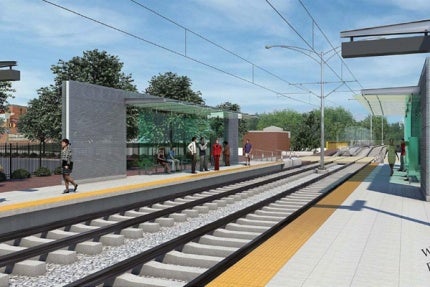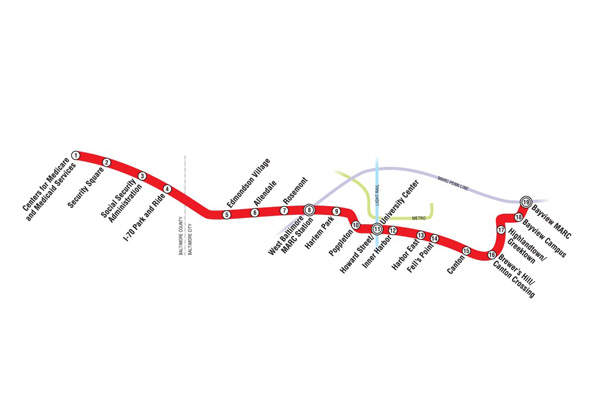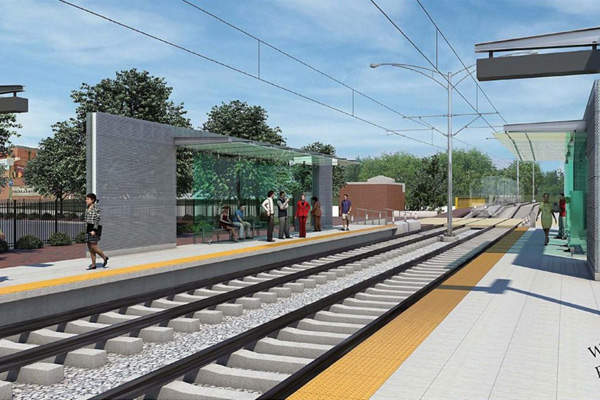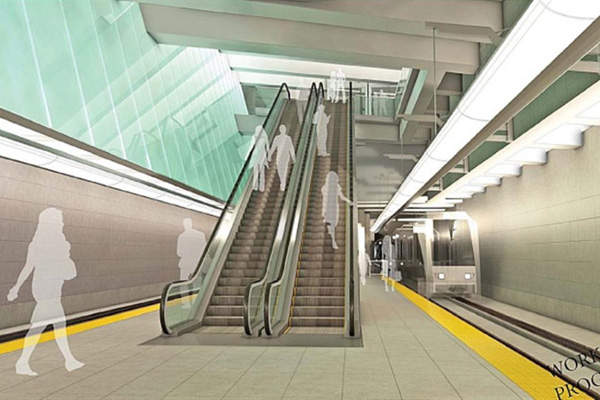
The Baltimore Red Line is a 14.1 mile (22.7km) east-west light rail transit (LRT) line proposed by the Maryland Transit Administration (MTA) that will run from Woodlawn in suburban Baltimore County to Bayview in east Baltimore City.
First phase preliminary engineering for the LRT project was completed in June 2012 and federal approval for the project’s environmental plan was received in March 2013.
Construction is expected to begin in 2015 and completion is expected in 2022. The new LRT line will add to the Baltimore subway and light rail system, the city’s existing urban mass transit network.The average daily ridership of the line is projected to reach 54,000 by 2035.
Estimated to cost approximately $2.6bn, the Red Line project will create more than 9,800 jobs during the design and construction phases.
Baltimore Red Line route and infrastructure
A part of Governor Martin O’Malley’s ‘Smart, Green and Growin’ initiative, the Baltimore Red Line will be the region’s first cross-town rail route. The project will provide connectivity between locations such as Woodlawn, Edmondson Village, West Baltimore, downtown Baltimore, Canton, Harbor East, Fells Point and the Johns Hopkins Bayview Medical Centre Campus areas.
The new LRT line will also connect with the existing north-south transit services in Baltimore such as the Maryland Area Regional Commuter (MARC) rail system, the Baltimore heavy rail metro system, Central Light Rail Line, and the MTA bus system.
Related content
Exposition Transit Corridor, Los Angeles, United States of America
The Exposition Transit Corridor is a 15.2 mile-long light rail transit system (LRT) between downtown Los Angeles and Santa Monica, California, US.
The line will improve access to the University of Maryland, Baltimore (UMB) downtown. It will also create connectivity to the city’s major hospitals, such as Johns Hopkins Hospital, the University of Maryland Medical Center, the Veterans Administration Hospital and Bayview.
The project will include the construction of 15 surface and five underground stations, six park-and-ride facilities and a rail car storage and heavy maintenance facility at Calverton Road.
The LRT line will have 38 light rail vehicles running at a maximum design speed of 55mph.
Traction power substations and an overhead catenary system will be built along the alignment to supply electricity for the vehicles running on the new line. The underground section of the Red Line will be installed with mechanical ventilation systems with fans, air plenums and air shafts.
Alignment details
The 14.1-mile LRT line with a combination of surface, aerial and underground tunnel alignments was selected as the locally preferred alternative (LPA) out of 12 options considered for the mass transit project. Also considered was transportation system management (TSM) which called for an upgrade to the existing transit system without building a new transit way, as well as a bus rapid transit (BRT) system, which proposed the use of rubber-tired buses.
Approximately three miles of the LRT line will be within Baltimore County. The transit line in this section will either run parallel or across the Interstate Highway 70 and US Route 40. The line will then enter a 1.3 mile long tunnel via a portal near the intersection of Cooks Lane/Forest Park Avenue/Security Boulevard, after which it runs for about 3.3 miles through tunnels in downtown Baltimore along Edmondson Avenue, Franklin Street and the US 40 lower-level roadway. However, the transit route on the east end will use the Norfolk Southern railroad right-of-way.
LRT operations and maintenance facility
The operations and maintenance (O&M) facility for the LRT line will feature 11 parcels spread over 20.8 acres in Baltimore City along the south side of US 40/Franklin Street on Calverton Road between Franklintown Road and Warwick Avenue.
The O&M facility is expected to have a storage capacity of 34 light rail vehicles and a shop capacity of ten vehicles. It will also feature an outdoor storage facility for track and rail systems materials and equipment.
Construction of the facility is expected to start in 2016 and will be completed in 2018. The facility will employ approximately 300 staff members for different operations such as track maintenance, transit electrical power, catenary maintenance, transportation operations, materials management, facilities maintenance and rail car maintenance.






